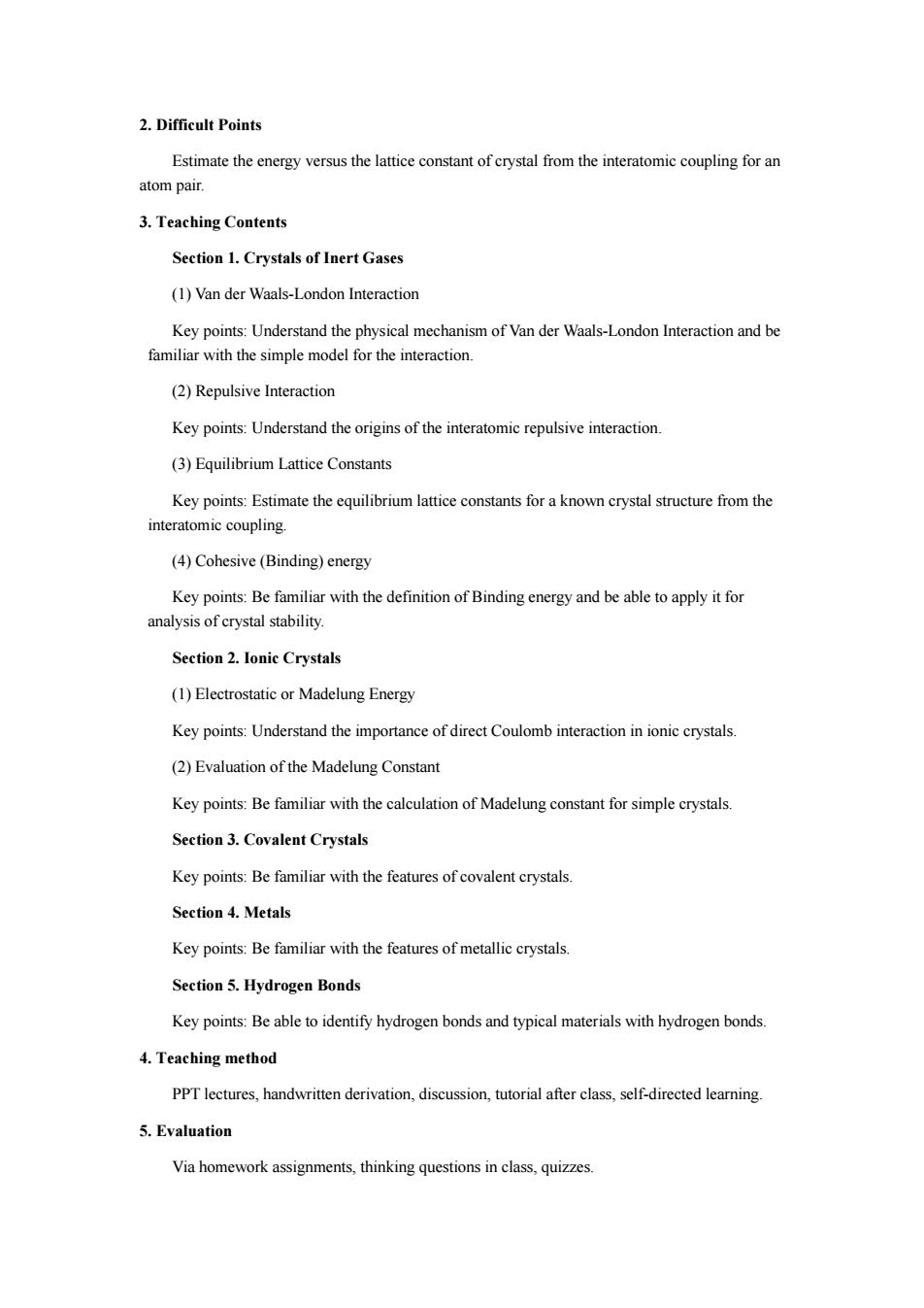正在加载图片...

2.Difficult Points Estimate the energy versus the latice constant of crystal from the interatomic coupling for an atom pair. 3.Teaching Contents Section 1.Crystals of Inert Gases (1)Van der Waals-London Interaction Key points:Understand the physical mechanism of Van der Waals-London Interaction and be familiar with the simple model for the interaction. (2)Repulsive Interaction Key points:Understand theoriginsof the interatomic repusive interaction (3)Equilibrium Lattice Constants Key points:Estimate the equilibrium lattice constants for a known crystal structure from the interatomic coupling. (4)Cohesive(Binding)energy Key points:Be familiar with the definition of Binding energy and be able to apply it for analysis of crystal stability. Section 2.Ionic Crystals (1)Electrostatic or Madelung Energy Key points:Understand the importance of direct Coulomb interaction in ionic crystals (2)Evaluation of the Madelung Constant Key points:Be familiar with the calculation of Madelung constant for simple crystals Section 3.Covalent Crystals Key points:Be familiar with the features of covalent crystals. Section 4.Metals Key points:Be familiar with the features of metallic erystals. Section 5.Hydrogen Bonds Key points:Be able to identify hydrogen bonds and typical materials with hydrogen bonds 4.Teaching method PPTlectures,handwritten derivation,discussion,tutorial afer self-directed leaming. 5.Evaluation Via homework assignments,thinking questions in class,quizzes. 2. Difficult Points Estimate the energy versus the lattice constant of crystal from the interatomic coupling for an atom pair. 3. Teaching Contents Section 1. Crystals of Inert Gases (1) Van der Waals-London Interaction Key points: Understand the physical mechanism of Van der Waals-London Interaction and be familiar with the simple model for the interaction. (2) Repulsive Interaction Key points: Understand the origins of the interatomic repulsive interaction. (3) Equilibrium Lattice Constants Key points: Estimate the equilibrium lattice constants for a known crystal structure from the interatomic coupling. (4) Cohesive (Binding) energy Key points: Be familiar with the definition of Binding energy and be able to apply it for analysis of crystal stability. Section 2. Ionic Crystals (1) Electrostatic or Madelung Energy Key points: Understand the importance of direct Coulomb interaction in ionic crystals. (2) Evaluation of the Madelung Constant Key points: Be familiar with the calculation of Madelung constant for simple crystals. Section 3. Covalent Crystals Key points: Be familiar with the features of covalent crystals. Section 4. Metals Key points: Be familiar with the features of metallic crystals. Section 5. Hydrogen Bonds Key points: Be able to identify hydrogen bonds and typical materials with hydrogen bonds. 4. Teaching method PPT lectures, handwritten derivation, discussion, tutorial after class, self-directed learning. 5. Evaluation Via homework assignments, thinking questions in class, quizzes